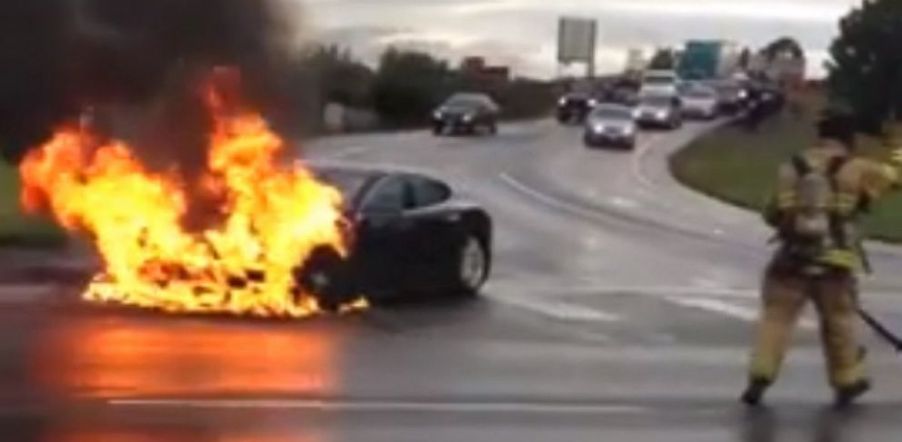
NHTSA Reports EV Battery Fires Weeks After Crash A Problem
Electric vehicles are safe, but there continue to be instances of them spontaneously igniting. That’s not what this is about. This is about EVs in accidents and while crews are mopping up the car ignites and burns down. Or after the accident firefighters put out the EV fire only to have it reignite after it gets towed to an impound yard. The NHTSA has even received reports of EV battery fires happening weeks after a crash.
Emergency responders are at greater risk with EV battery fires

Lithium-ion batteries can get hot. There are certain risks when they become exposed after an accident. Emergency responders are at greater risk when it involves an EV. That has prompted a study by the NHTSA that says they provide scant guidance for avoiding high-voltage battery fires.
Energy can remain in batteries after a crash. It is stranded energy that can lead to what is called “thermal runaway.” That’s why there have been post-crash fires sometimes weeks after an accident. Sometimes firefighters put out a fire only to hear popping during mop-up. Soon after the fire is reignited and firefighters have to attack the flames a second time.
That’s why manufacturers need to give more information around “when it’s safe to transport the vehicle, how long they need to leave the road shut down when it’s safe for a tow-truck operator to come and how to control risks for thermal runaway,” Kristin Poland, NTSB deputy director, told Automotive News. “There are aspects of this where we feel the manufacturers have the best information and can help those emergency responders make good decisions.”
There are over 170,000 vehicle fires every year on average

On average there are over 170,000 vehicle fires every year. Only a tiny portion of those involved electric vehicles according to the National Fire Protection Association. Thankfully, of that small amount of EV fires, there have been no reports of injured or killed emergency responders. But the NTSP is concerned that the dangers will increase as the growth of EVs increases.
One case in Mountain View, California, is famous among fire and safety experts. Since Mountain View is close to Tesla’s headquarters the firefighters called Tesla after a crash. Engineers from Tesla came out to the scene of the crash within an hour. Once there they heard popping sounds coming from the crashed Model S.
About 20 minutes after arriving at Tesla popping sounds began again

Deciding it was too risky to do an inspection on crowded Highway 101, Tesla engineers called a flatbed to have the car taken back to the headquarters. A firetruck followed the flatbed for the hour-long trip back to Fremont. About 20 minutes after arriving at Tesla popping sounds began again. The San Mateo Fire Department was called out to put out another fire of the crashed Tesla. This was over seven hours after the initial crash. But that wasn’t the end of it.
Five days later the fire department was called out to the Tesla impound yard again because of another fire with the same car. “For me, that one was really eye-opening,” said Tom Barth, a fire investigator. “The fire department had access to the engineers, and there was still confusion about how to handle this vehicle and the attempts to remove the stranded energy; they were not able to do it effectively. That pointed to the fact that ‘Hey, this stranded energy, there are still gaps in the regulatory approach.’ ”



